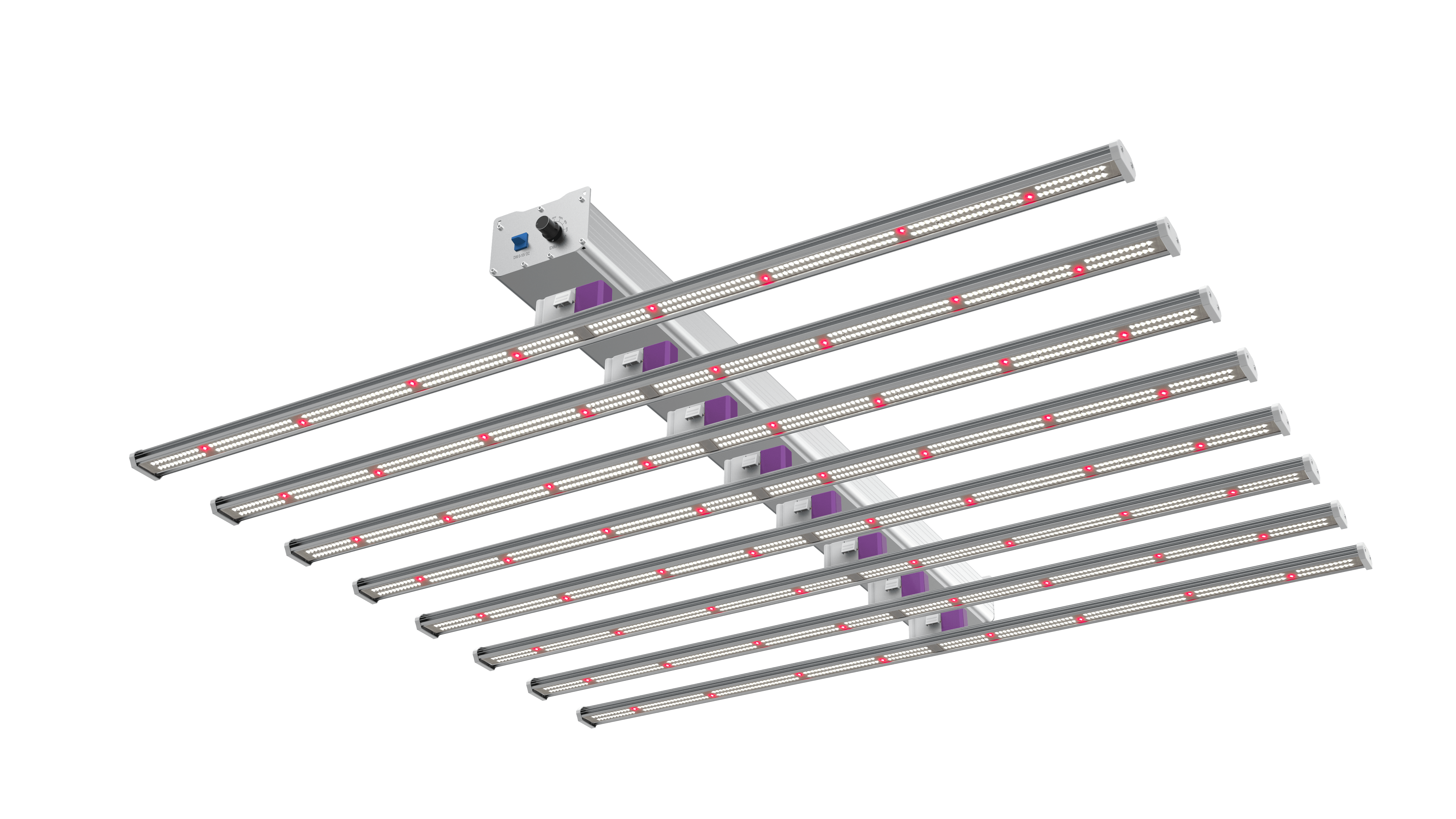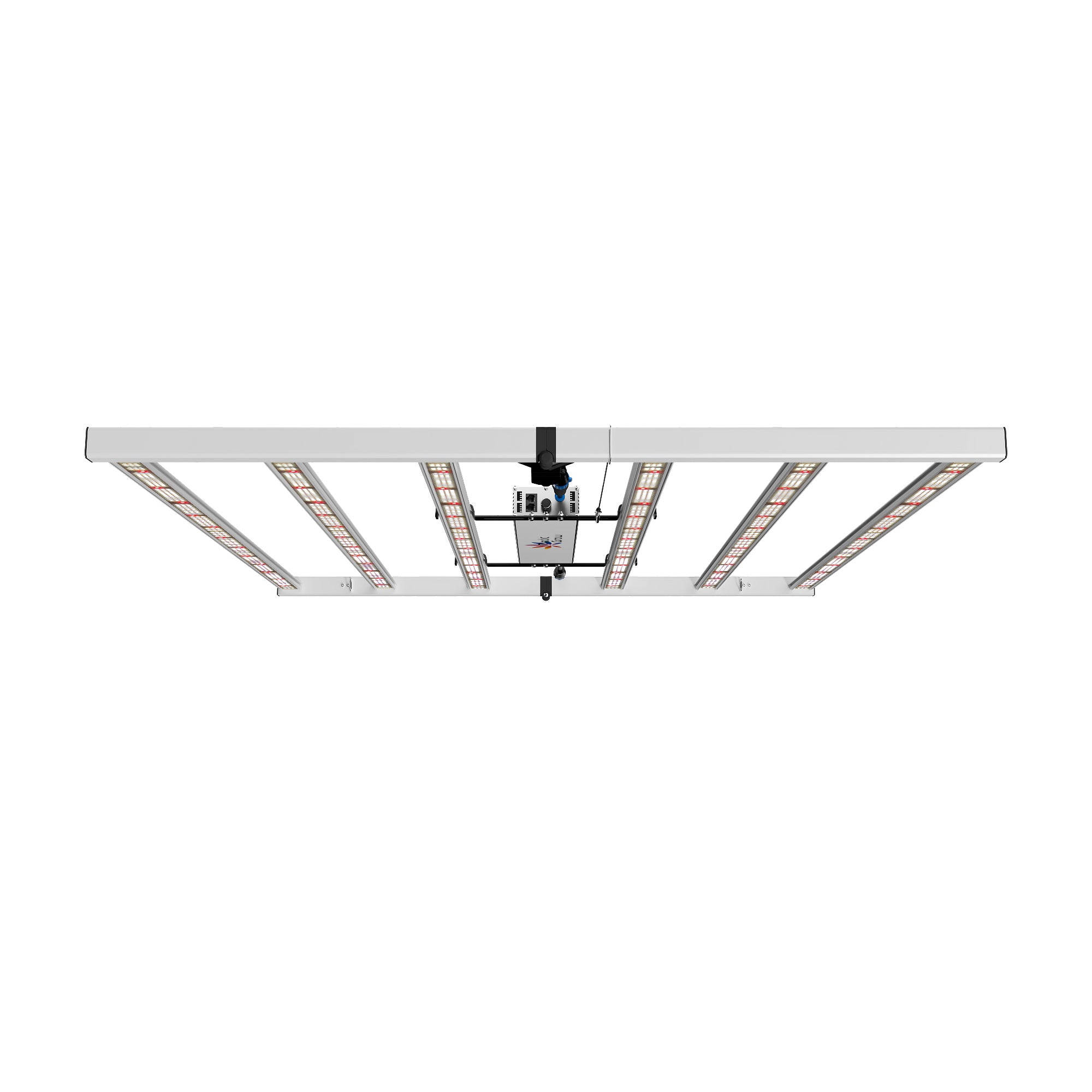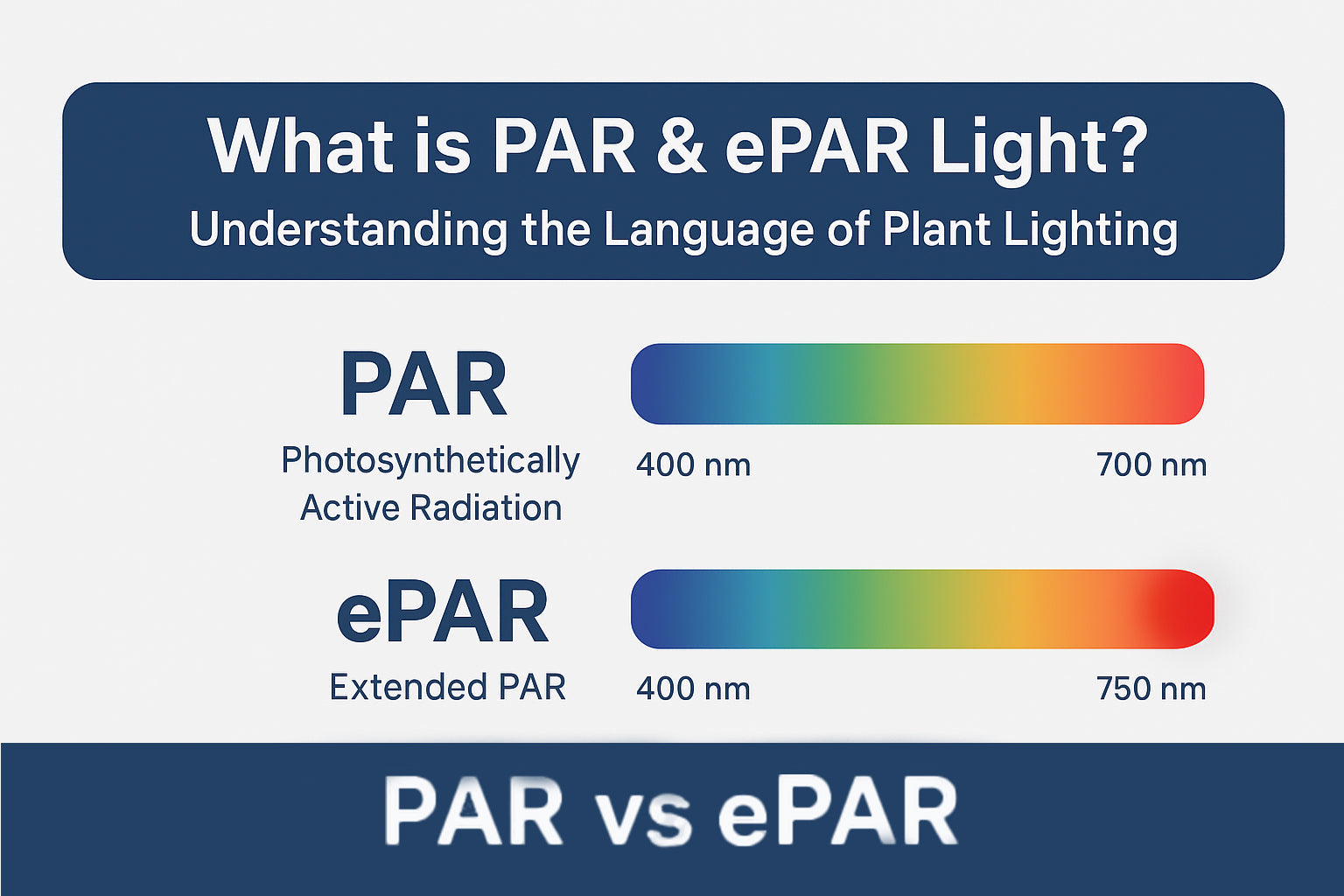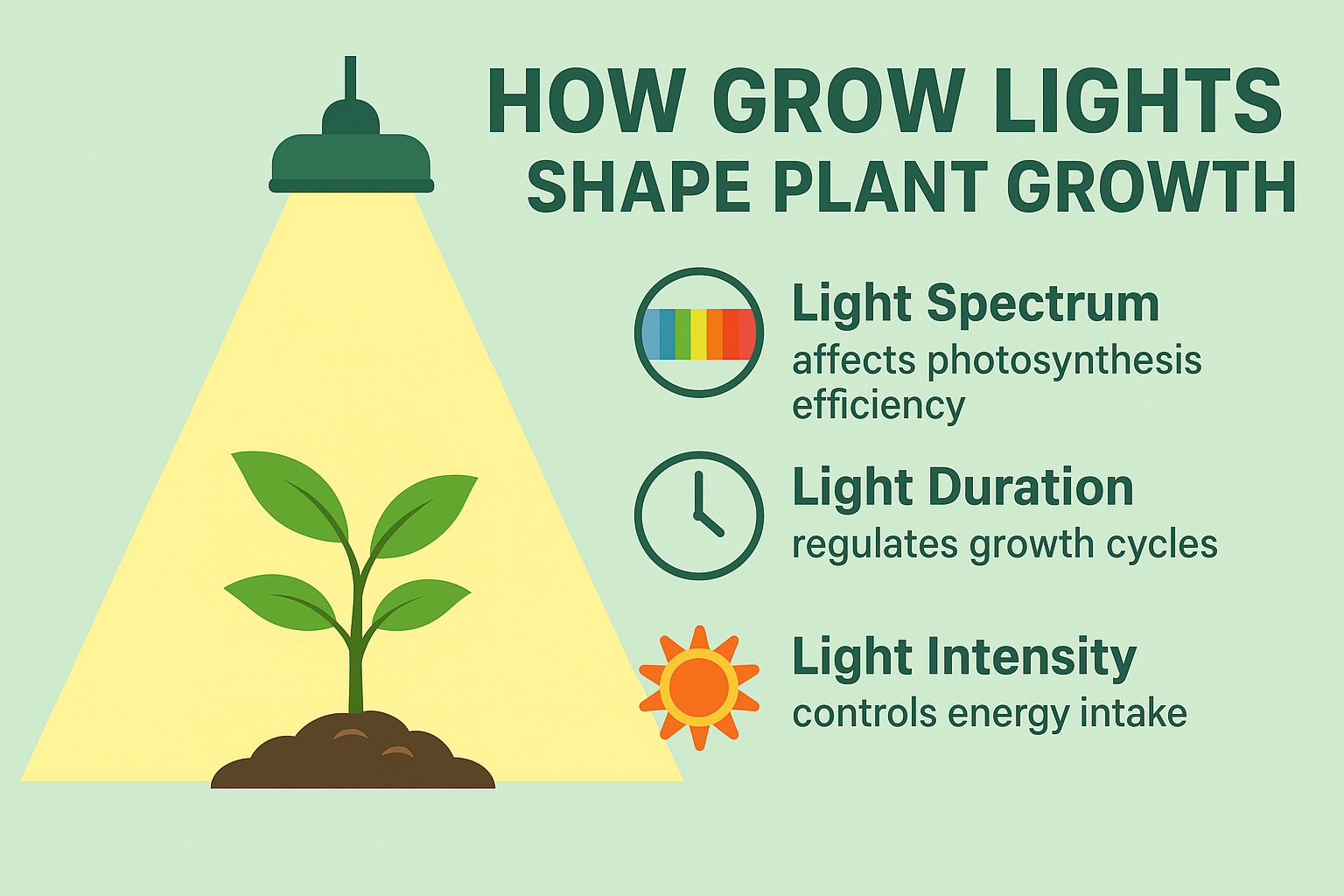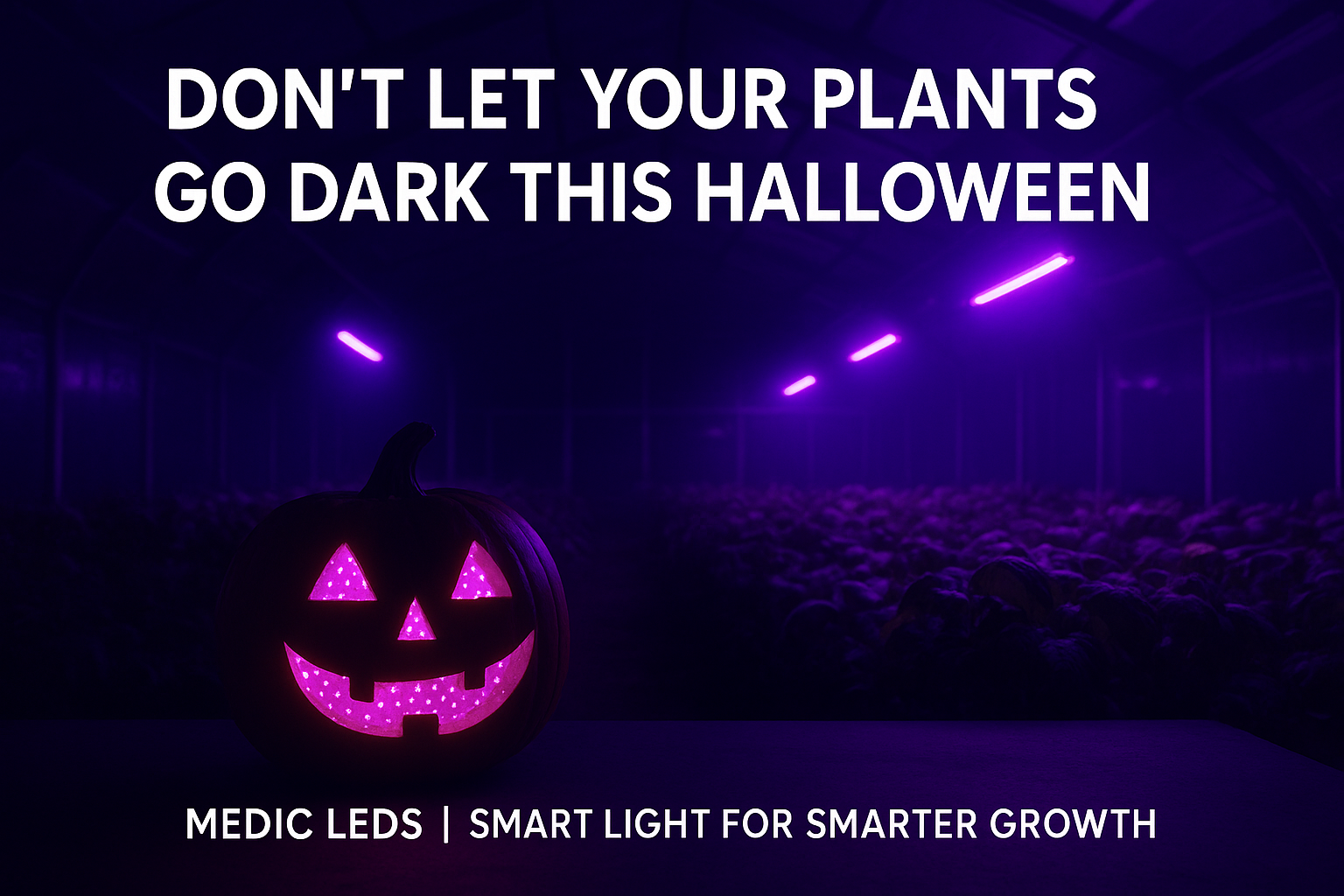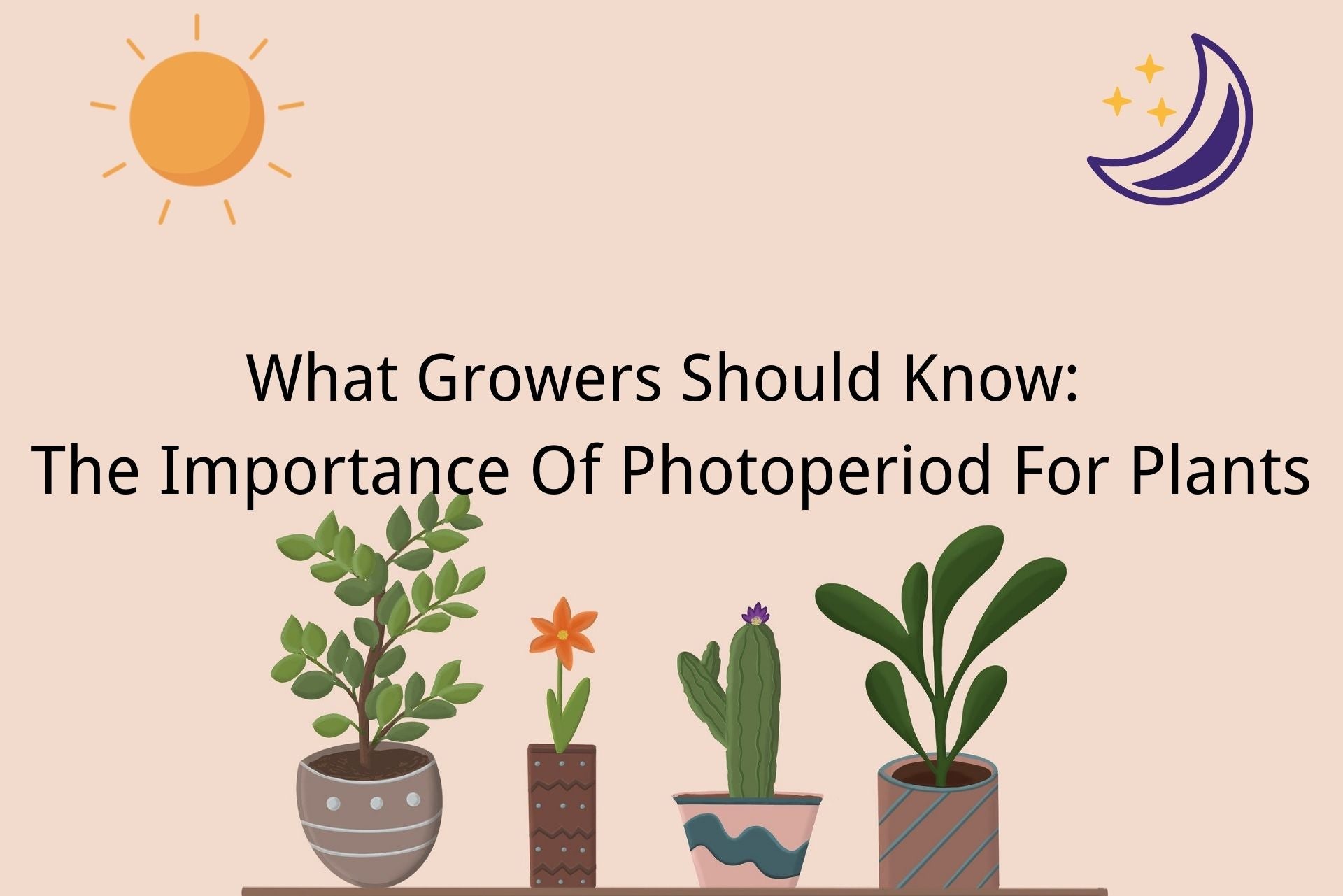
What Growers Should Know: The Importance of Photoperiod For Plants
Photoperiodism refers to the ability of plants to measure and sense day and night time lengths. Knowing photoperiod for plants helps growers to understand how a plant will react when exposed to different light and dark conditions.
Plants have the ability to sense the amount of light and duration of this light, using a light-sensitive receptor known as phytochrome.
This allows them to respond appropriately by flowering at suitable times of the year.
In this article, we'll help you understand the meaning of photoperiodism and learn the importance of photoperiod for plants.
- Part 1: What is Photoperiodism?
- Part 2: Importance of Photoperiodism in Plants
- Part 3: How Does Photoperiod Affect Plant Growth?
- Part 4: How do you control the photoperiod for plants?
- Part 5: Can LED Grow Light Replace Sunlight for Plants?
What is Photoperiodism?
Photoperiodism is the physiological reaction of plants and animals to night and day lengths.
In simple terms, plants react a certain way when they are exposed to periods of light followed by periods of darkness. These periods of darkness help them to distinguish between day and night.

Image Source: gamesmartz.com
The constant rotation and revolution of the earth result in changes in day and night lengths as well as changes in different seasons.
Several plants respond to day lengths in the form of seed germination, leaf and stem growth, flowering, fruiting, etc. The switch from day to night triggers a temperature change as well.
Let's take a closer look at the importance of photoperiodism in plants.
Importance of Photoperiodism in Plants
The phenomenon of photoperiodism was discovered in 1920 while tests were being conducted on tobacco plants.
These tests revealed that they were the periods of darkness which contributed to the blooming of plants–several plants showed better signs of development when exposed to long phases of darkness while others performed better when exposed to short phases of darkness. Some were indifferent or 'neutral' to periods of darkness and bloomed when they reached a certain point of growth.

Image Source: orbitbiotech.com
In the year 1959, scientists discovered 'phytochrome' which is the plant pigment that is responsible for the growth and development of the plant as a reaction to phases of uninterrupted darkness.
This pigment is sensitive to light and its structure changes when it is exposed to light.
Plants can be classified into three groups based on their photoperiods:
1.Short-Day Plants:
Short-Day Plants, as the name suggests, are plants that bloom or flower when they experience more than 12 hours of uninterrupted darkness and less than 12 hours of light.
This means that for these plants to flower, there should be a longer period of darkness than their light exposure (i.e long nights and short days).
A majority of the photoperiodic plants belonging to this category grow in the winter months when days are shorter and nights are longer.
Some examples of short-day plants include:
- Cotton
- Soybean
- Sugar cane
- Chrysanthemums
- Poinsettias
- Christmas cactus
2.Long-Day Plants:
Long-day plants are plants that bloom when exposed to more than 12 hours of light and less than 12 hours of dark. These plants require long phases of daylight and short phases of darkness to flower (i.e long days and short nights).
Some examples of long-day plants include:
- Spinach
- Pea
- Calendula
- Radish
- Lettuce
3.Day-neutral Plants:
Day-neutral plants are not affected by the amount of daylight they are exposed to. Such plants initiate flowering after reaching a certain point such as their vegetative growth.
Some examples of day-neutral plants include:
- Cucumber
- Maize
- Sunflower
- Tomatoes
What is a Critical Photoperiod?
A critical photoperiod can be defined as the specific day length required by plants to induce or prevent flowering.
The best photoperiod for plants varies between different species. A critical photoperiod, in simple words, is the minimum or maximum amount of daylight that is required for flowering.
In the case of long-day plants, the day length must exceed the critical photoperiod while for short-day plants, the day length needs to be lesser than the critical photoperiod.
What does Photoperiodic Induction mean?
Photoperiodic Induction refers to the process of inducing flowering stimulus in the leaves of the plant in an inductive cycle.
There is one inductive cycle in each cycle of 24 hours. Some plants may need only one inductive cycle to trigger flowering while others may require multiple cycles.
When plants are exposed to several inductive cycles, it may lead to early flowering of the plant.
In the next part, let's take a look at how photoperiod affects plant growth.
How Does Photoperiod Affect Plant Growth?
Photoperiod or the day length plays a significant role in plant growth. It can have desirable effects on some plants and undesirable effects on others depending on how long they are exposed to periods of light and dark.

There may be some plants that bloom under multiple different photoperiods but bloom much faster under one specific photoperiod.
Understanding the effects of light on plant growth can help growers to maintain the right environment for their plants.
Here are a few ways in which the photoperiod affects plant growth:
●Results In Developmental Responses:
Photoperiod for plants can be beneficial in preventing some plants from flowering or blooming. They can be kept in the vegetative stage of growth and this leads to a high and stable yield of plants.
More vegetative growth also means that the plants will be bulkier.
On the other hand, there can be undesirable effects when short-day plants are exposed to long periods of daylight and long-day plants are exposed to long periods of darkness.
For instance, it can lead to undesirable flowering in plants or impede their growth and development.
●Affects The Seasonal Flowering Of Plants:
Photoperiodism is the reason why plants flower and experience fruiting in certain seasons. The day length changes all year round and affects the productivity of plants.
●Seasonal Crops Can Be Produced Year-round
Manipulating photoperiods can help farmers and growers extend the season of several plants–this means that plants that only grow in a particular season can be made to grow all year round in a controlled environment.
This can be achieved by using LED grow light set-ups to help long-day plants get the extra light that will induce flowering. Even on days when the natural day length is short, plants will be able to get the light that they need.
●Higher Yield By Keeping Plants In Vegetative Stage Of Growth
Knowledge of specific day lengths of plants can help growers to understand light conditions that will trigger different physiological responses in plants.
By understanding the photoperiod of a particular plant, growers can prevent undesirable responses such as flowering, seed germination, leaf and stem growth, or bulb initiation.
Instead, they can have a higher yield by keeping their plants in specific stages of growth. For instance, keeping a turnip in the vegetative stage continuously.
In the next part, let's try to understand whether you can control the photoperiod for plants and how you can correctly manipulate it.
How do you control the photoperiod for plants?
If you're wondering whether it's possible to control the photoperiod for plants–yes, it is.
Whether you're growing outdoors in a greenhouse or indoors in a grow room/complete grow tent kit, you can easily manipulate the photoperiod for plants to create an impression of short or long day lengths.
During their initial studies in 1920, Allard and Garner thought that the controlling factor was the day length which made all the difference but later it was found that it was the night length that induced flowering in plants.
Natural Day Length Of Plants
The natural day length of plants varies throughout the year. As the Earth revolves and the seasons change, the length of the day changes too. You might already know that the equator divides the Earth into two parts: the Northern and the Southern hemisphere.
These two halves go through different seasons at the same time–when the northern hemisphere is experiencing winter, it will be summer in the southern hemisphere and vice versa.
The longest day for the northern hemisphere is June 21 while the same day is the shortest day for the southern hemisphere. Likewise, the shortest day for the northern hemisphere is December 21, which is the longest day for the southern hemisphere.

Image Source: nationalgeographic.org
This is why plants measure light duration based on the hours of darkness they experience. When exposed to artificial 800W grow lights, plants are tricked into thinking that they're experiencing longer day lengths and shorter phases of darkness.
This triggers the growth and development of these plants.
Creating Artificial Short Days For Plants
When the natural day length is too long, growers tend to create a photoperiod control system. They do this by covering the plants with an opaque material, also called a 'blackout fabric' so that minimal light passes through.
As a result, plants go through a dark phase while they are covered with the fabric and this triggers flowering in short-day plants. On the contrary, this can also prevent/delay flowering in long-day plants.
Plants need to be manually covered every single time to create this artificial dark phase for your plants. It must be noted that covering the plants with the fabric can result in temperature rises.
During natural short-days, it must be ensured that plants are not exposed to light pollution or photo pollution from artificial lights (for instance, street lights) as this may interfere with their growth and development.
Creating Artificial Long Days For Plants
To create an artificial long day, you can use photoperiodic lighting. Turn the lighting on after the sun sets and keep it turned on until you've achieved the required photoperiod for plants. It's suggested to use light sources that are 10 foot-candles.
Keeping these lights on for several hours helps you to create an illusion of a long day or extended daytime.
It is essential to know how the process of night and day works to make the best growing environment for your plants.
The methods of creating longer/extended days and shorter days more or less revolve around the same approach–for long-day plants, you just need to do the opposite of what you're doing for your short-day plants.
In the next section, we'll answer one of the most important questions that most indoor growers ask.
Can LED Grow Light Replace Sunlight for Plants?
Short answer:
Full-spectrum LED grow lights can only mimic and not fully replicate sunlight, although they are quite useful in situations where sunlight is not available or is barely available.
Here's how it works:
During the process of photosynthesis, plants take in the sunlight along with water and carbon dioxide and use it to produce sugars. Needless to say, sunlight is free of cost and it is a valuable resource that farmers benefit from.
Over the years, several kinds of artificial lighting set-ups have gained popularity, including LEDs, HIDs, fluorescent, incandescent, and more!
Artificial grow lights are beneficial for many reasons. Sometimes, rooms in the house do not get ample natural light and so, growers choose artificial lighting set-ups instead.
At other times, growers may live in areas where they get minimal sunlight or no light at all. Some growers even choose to grow fruits and vegetables at home to cut down the costs and have organic, home-grown produce.
In such cases, growers choose to grow their choice of herbs, fruits and vegetables in grow tents or grow rooms with the help of artificial grow lights.
1000W LED Grow lights are efficient, compact, and adjustable and they produce low heat. They can be used to grow a variety of plants, such as tomatoes, lettuce, spinach, basil, thyme, and a plethora of microgreens.

Additionally, some LED grow lights also come with a switch that allows you to alter the intensity of the light according to the stage of plant growth. This means that your plants get plenty of light in each phase of development.
Final Thoughts:
Day length may only be one of the factors of plant growth but it is a vital contributing factor.
Growers can use this knowledge of photoperiodism to plant crops at suitable times and achieve desirable results such as a better yield and year-round production of crops.
It is easy to manipulate the photoperiod for plants and create the impression of a long day by keeping grow lights switched on continuously while reducing the time their plants spend in dark phases.
Likewise, one can create the impression of a short day by covering the plants with a blackout curtain or fabric.
Even though responses to photoperiods can be easily predicted, other aspects of a plant's growth and development such as water, soil, air, etc. need to be closely monitored to have a healthy plant.
Related Posts
How Much Light Do Indoor Plants Need?
What is Light Burn: How to Fix it?
7 Factors Affecting Plant Growth - How to Make Plants Grow Faster?
Featured Products
Blog Posts
Contact Us with Any Idea!
- Choosing a selection results in a full page refresh.
!

















